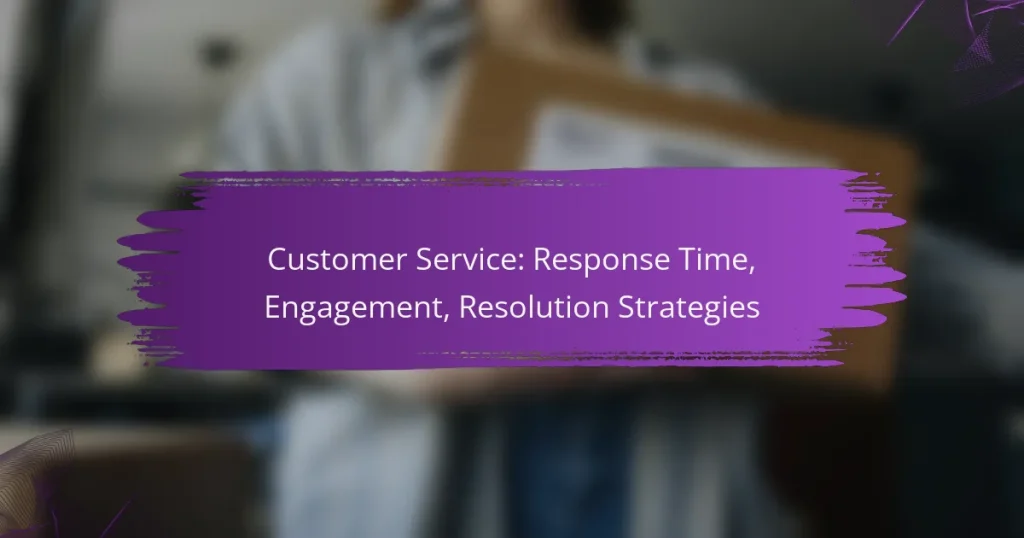In today’s competitive landscape, enhancing customer service is crucial for business success. By improving response times, engaging customers through personalized interactions, and implementing effective resolution strategies, companies can foster loyalty and satisfaction. Utilizing technology and training staff are essential components in achieving these goals.
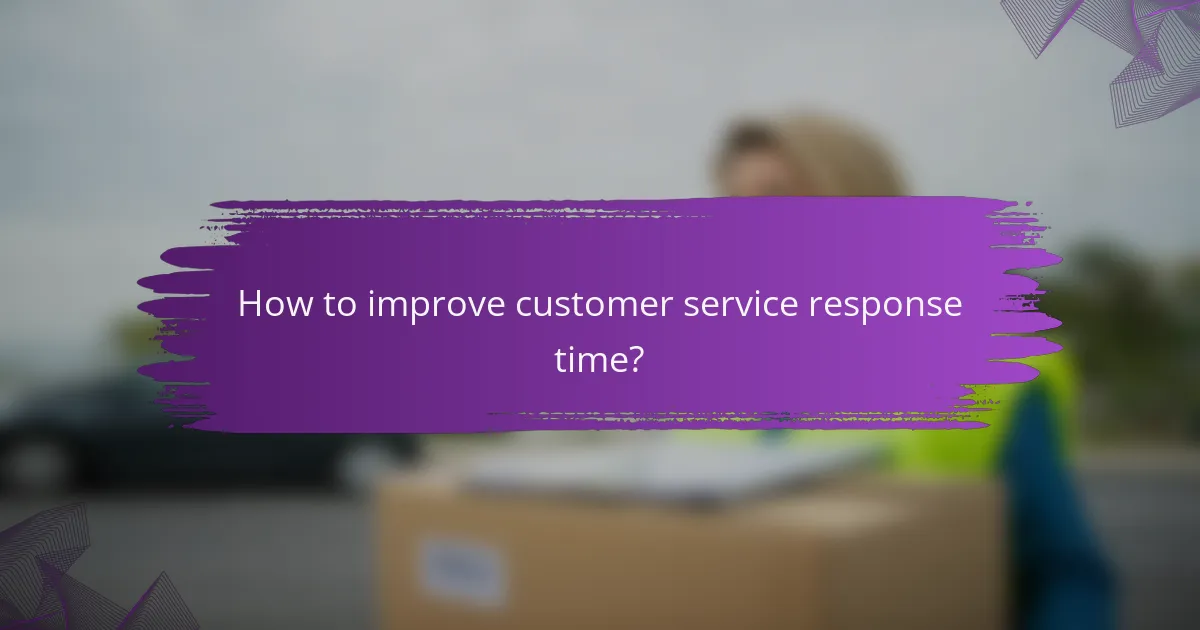
How to improve customer service response time?
Improving customer service response time involves implementing strategies that enhance efficiency and speed. Key methods include utilizing technology, training staff, and setting clear expectations for response times.
Implementing chatbots for instant replies
Chatbots can significantly reduce response times by providing immediate answers to common inquiries. They are available 24/7, allowing customers to receive assistance outside of regular business hours.
When deploying chatbots, ensure they are programmed with a comprehensive FAQ database to handle typical questions effectively. Regular updates and monitoring can help improve their accuracy and user satisfaction.
Utilizing customer service software like Zendesk
Customer service software such as Zendesk streamlines communication and ticket management, which can enhance response times. These platforms allow agents to track inquiries and prioritize urgent issues efficiently.
Consider integrating automation features within the software to route tickets based on complexity or customer history. This can help ensure that inquiries are directed to the most qualified staff member quickly.
Training staff for efficient communication
Training your customer service team in effective communication techniques can lead to faster resolutions. Focus on active listening, empathy, and clear messaging to ensure that agents can address customer needs promptly.
Regular training sessions and role-playing scenarios can help staff practice these skills. Additionally, providing them with access to resources and knowledge bases can empower them to respond more efficiently.
Setting clear response time goals
Establishing clear response time goals helps set expectations for both customers and staff. Aim for specific targets, such as responding to emails within a few hours or live chat inquiries within minutes.
Monitor performance against these goals regularly and adjust them based on customer feedback and operational capabilities. This practice not only improves accountability but also enhances overall customer satisfaction.
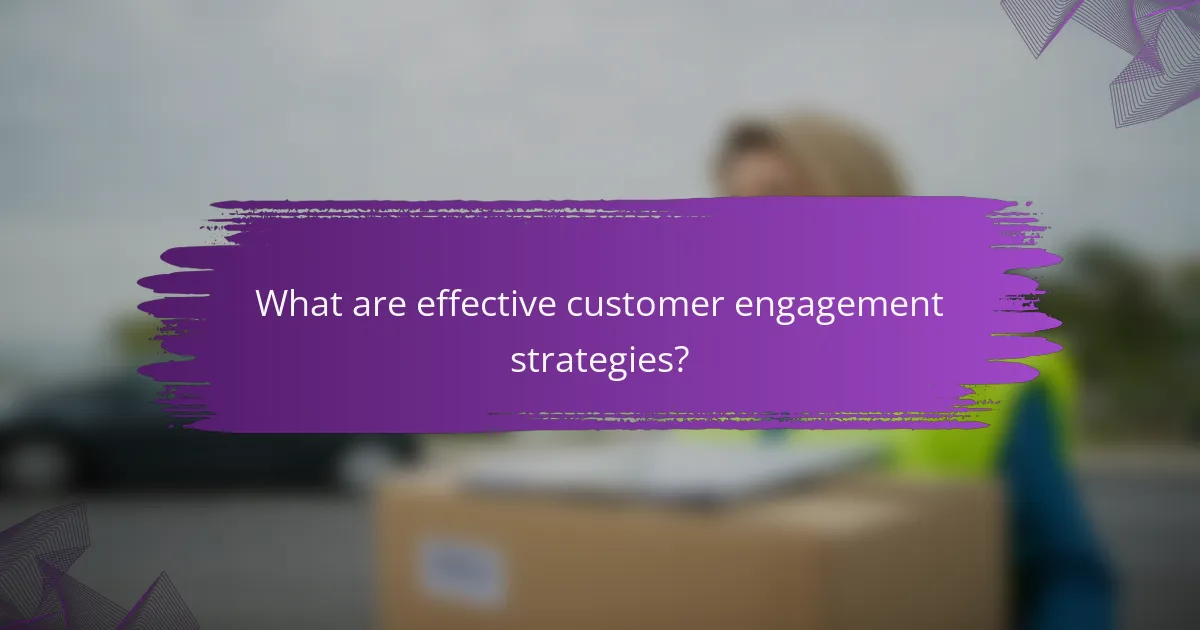
What are effective customer engagement strategies?
Effective customer engagement strategies focus on building strong relationships with customers through personalized interactions, leveraging social media, and creating loyalty programs. These approaches enhance customer satisfaction and foster long-term loyalty, ultimately driving business success.
Personalizing customer interactions
Personalizing customer interactions involves tailoring communication and services to meet individual customer preferences and needs. This can be achieved through data analysis, which helps identify customer behaviors and preferences.
For example, using a customer’s name in communications or recommending products based on previous purchases can significantly enhance their experience. Businesses should also consider segmenting their audience to deliver targeted messages that resonate with specific groups.
Utilizing social media platforms like Facebook and Twitter
Social media platforms like Facebook and Twitter are powerful tools for engaging with customers in real-time. These channels allow businesses to respond quickly to inquiries, share updates, and gather feedback, creating a two-way communication channel.
To maximize engagement, companies should actively monitor their social media accounts and respond promptly to comments and messages. Regularly posting relevant content and engaging with followers through polls or questions can also foster a sense of community and loyalty.
Creating loyalty programs for repeat customers
Loyalty programs incentivize repeat purchases by rewarding customers for their continued business. These programs can take various forms, such as points systems, discounts, or exclusive offers, encouraging customers to return.
When designing a loyalty program, businesses should ensure that the rewards are appealing and attainable. For instance, offering a discount after a certain number of purchases can motivate customers to engage more frequently. Regularly communicating the benefits of the program can also enhance participation and satisfaction.
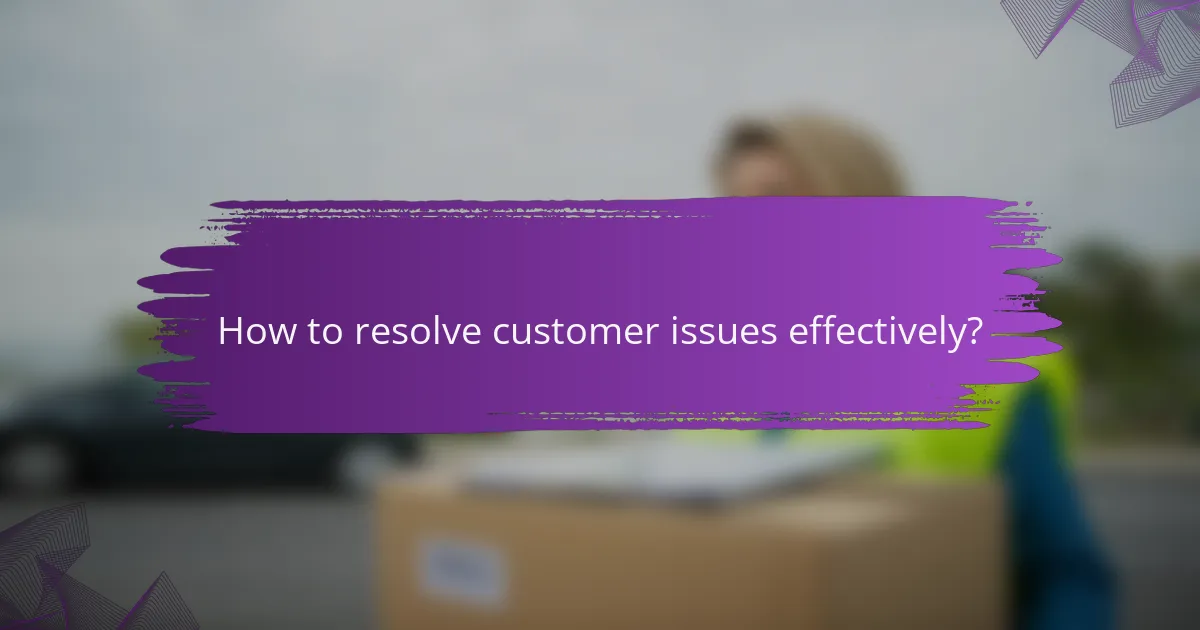
How to resolve customer issues effectively?
To resolve customer issues effectively, focus on timely responses, clear communication, and thorough follow-up. Implementing structured strategies can enhance customer satisfaction and loyalty.
Adopting a proactive approach to problem-solving
A proactive approach involves anticipating potential customer issues before they arise. This can include regularly reviewing customer interactions and identifying common pain points.
For instance, if customers frequently ask about a specific feature, consider creating a detailed FAQ or tutorial. This not only addresses current concerns but also prevents future inquiries.
Establishing a clear escalation process
A clear escalation process ensures that complex issues are addressed promptly by the right personnel. Define specific criteria for when a customer issue should be escalated and who is responsible for handling it.
For example, if a problem remains unresolved after a certain timeframe, it should automatically escalate to a supervisor. This helps maintain accountability and improves resolution times.
Gathering customer feedback for continuous improvement
Regularly gathering customer feedback is essential for identifying areas that need improvement. Utilize surveys, follow-up calls, or feedback forms to collect insights on customer experiences.
Analyze this feedback to pinpoint trends and make informed adjustments to your service processes. For instance, if many customers report long wait times, consider increasing staffing during peak hours.
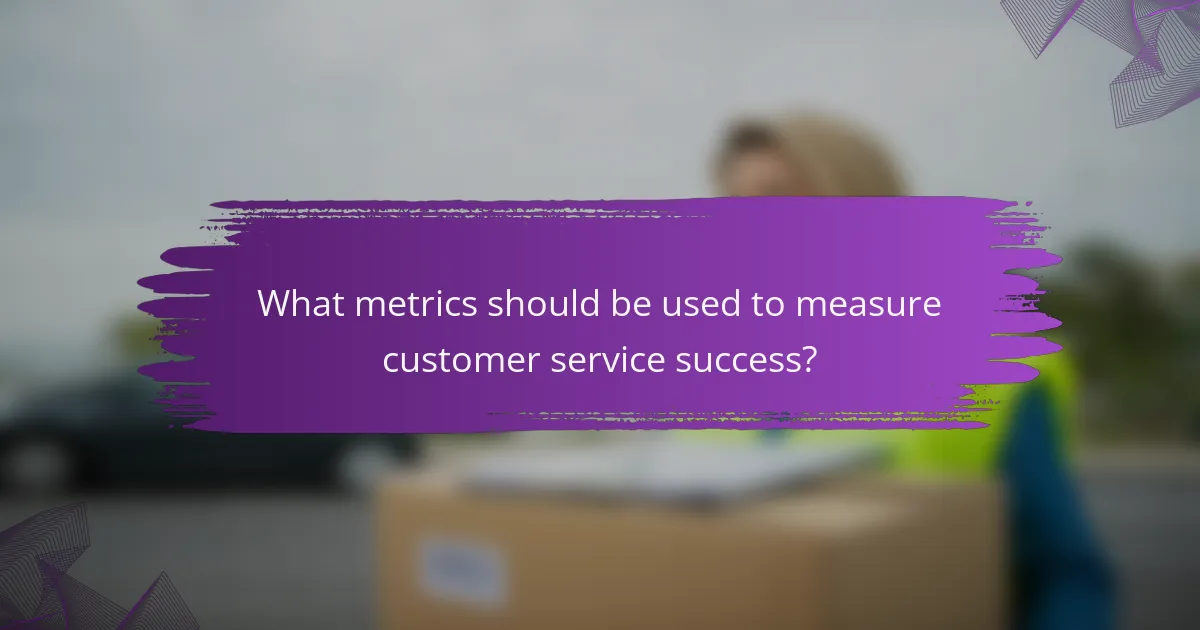
What metrics should be used to measure customer service success?
To effectively measure customer service success, businesses should focus on key metrics such as average response time, customer satisfaction scores, and resolution rates. These metrics provide valuable insights into the efficiency and effectiveness of customer service operations.
Tracking average response time
Average response time is a critical metric that indicates how quickly customer service representatives address inquiries. Aiming for a response time in the low single-digit minutes can enhance customer satisfaction significantly. Businesses should monitor this metric regularly to identify trends and areas for improvement.
To track this metric, consider using customer service software that logs response times automatically. This data can help set benchmarks and goals, ensuring that your team maintains a high standard of service.
Measuring customer satisfaction scores
Customer satisfaction scores (CSAT) gauge how well your service meets customer expectations. Typically measured on a scale from 1 to 5 or 1 to 10, a score of 8 or above is generally considered good. Regularly collecting feedback through surveys after interactions can provide actionable insights.
Implementing a simple post-interaction survey can help gather this data effectively. Ensure the survey is brief and straightforward to encourage higher response rates, which will give a clearer picture of customer sentiment.
Analyzing resolution rates
Resolution rates indicate the percentage of customer issues resolved on the first contact. Aiming for a resolution rate of 70% or higher is a common target for many businesses. High resolution rates often correlate with increased customer loyalty and satisfaction.
To improve resolution rates, train your staff on common issues and empower them with the authority to resolve problems without needing escalation. Regularly review cases that required multiple contacts to identify patterns and provide targeted training where necessary.
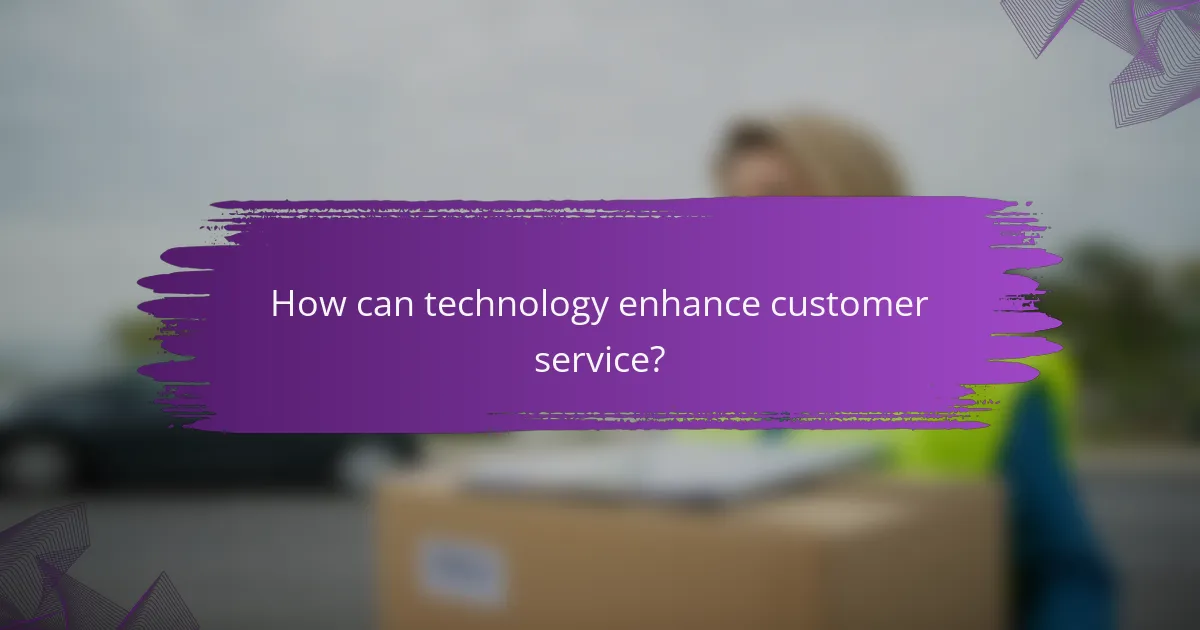
How can technology enhance customer service?
Technology can significantly enhance customer service by streamlining communication, improving response times, and providing valuable insights into customer behavior. By leveraging tools such as AI and CRM systems, businesses can engage customers more effectively and resolve issues promptly.
Integrating AI tools for data analysis
Integrating AI tools for data analysis allows businesses to process large volumes of customer data quickly and accurately. These tools can identify patterns in customer interactions, helping to predict needs and preferences, which can lead to more personalized service.
For example, AI chatbots can handle routine inquiries, reducing wait times for customers. This not only improves engagement but also frees up human agents to focus on more complex issues, enhancing overall service quality.
Using CRM systems for better customer insights
CRM systems centralize customer information, providing businesses with a comprehensive view of interactions and preferences. This enables teams to tailor their communication strategies and improve customer engagement by addressing specific needs based on historical data.
Utilizing CRM can lead to increased customer satisfaction, as agents can access relevant information quickly during interactions. Regularly updating and maintaining CRM data is crucial to ensure accuracy and effectiveness in customer service efforts.
